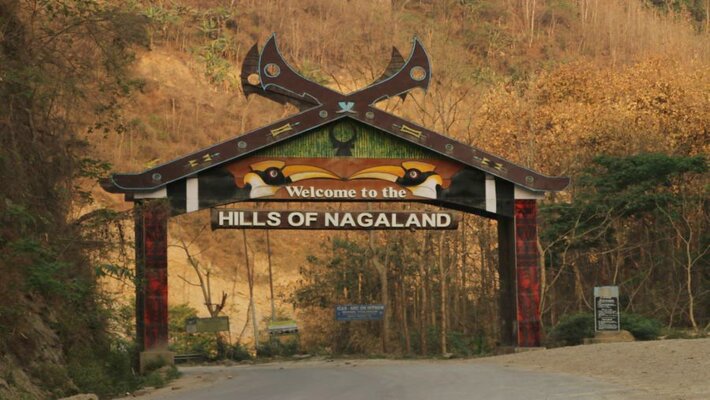
During her recent visit to Nagaland, President Droupadi Murmu stated that the vibrant culture as well as the rich heritage of the Naga tribes demonstrates India’s motto of ‘Unity in Diversity’. The President also added that “I am happy that my visit to Nagaland has coincided with the inauguration of various projects related to education, road infrastructure, and finance in the state”. She also went on to state that she is confident in these projects having a positive impact when it comes to improving literacy, economy, tourism, and ease of living in the state. President Droupadi Murmu urged the people of the state to rededicate themselves for a more developed Nagaland as it completes six decades of statehood.
A Brief Introduction of Nagaland
The state was formally inaugurated on December first of 1963. Nagaland is the 16th state of the Indian Union and it includes sixteen administrative districts. These districts are inhabited by 17 major tribes and other sub-tribes. Each of these tribes is unique as they have their own customs, language as well as dress. Also, often described as The Switzerland of the East, the state is blessed with picturesque landscapes and lush flora.
Stemming from the immense diversity and strong traditional beliefs in the state, Nagaland has had many moments of historical significance since it became a state. Let’s dive deep into some of these milestone moments.
Establishment of NEPED
NEPED or Nagaland Empowerment of People through Economic Development was a project which was established in 1995. At first, this was set up as an ICEF project making it the first foreign funded project in the state. NEPED includes a team of government officers who comes from different departments. These people are called Project Operations Unit (POU) Members. The project aims to make communities in the state self reliant. The development of agro-business and establishing proper marketing infrastructure was also a top priority for the project. This phase of the project was focused on improving the livelihood of the people in the state and environment in general. Later in 2007, Nagaland Empowerment of People through Energy Development (NEPeD) came into being which gave more focus towards energy needs in the state. NEPeD aims to implement community-based pico/micro hydro projects of sub megawatt level, supplement and provide alternative energy needs in rural areas, and empower people for sustainable livelihood through locally generated eco-friendly power among many others. The objectives of NEPeD include sustainable streamlining production and installation of the technology across the region, and ensure sustainable development through sustainable technologies and protection of the environment to name a few.
Creation of the Hornbill Festival
First started in the December of 2000, the Hornbill Festival is an annual festival held in Nagaland. This is celebrated from 1st to 10th of December and it represents all the different ethnic groups in the state. Also, known as the Festival of Festivals, the Hornbill Festival aims to promote inter-ethnic interaction in the state. Named after the Indian hornbill, this festival is conducted by the Department of State Tourism and Department of Art & Culture. All the different ethnic groups in the state take part in this festival and it acts as a platform to protect the rich culture and traditions in the state. The festival has also become a great tourist event where people from outside the state can get a better understanding of the people and culture of Nagaland. At the same time, they can also indulge themselves in local delicacies, songs and dances.
Nagaland Sustainable Development Goals (SDGs) Vision 2030
The Nagaland Sustainable Development Goals (SDGs) Vision 2030 has multiple goals. One of these goals is ensuring quality education. It prioritizes on offering inclusive as well as equitable education. This also encourages lifelong learning opportunities for everyone. With such a focused approach, the SDGs Vision 2030 aims to remove gender as well as other disparities at all levels in education. It also aspires to offer equal access to affordable education. Most importantly, by 2030, it is aiming for 100 percent literacy rate. Aside from that, it is also aiming for 100 percent enrolment in primary education among many others. It is focused on creating an education system which is responsive to the diverse groups of children as well as young people. By increasing opportunities for skill development, employment and entrepreneurship, it also aims to create skilled talent.
The government of Nagaland has multiple other initiatives to not only improve the economy of the state but also to better the livelihood of the local people. The state government with the support from Khelo India Mission is also aiming to develop the sports infrastructure in every district in the state. The ‘Act East policy’ by the Central Government which aims at the overall development of the Northeast region also has the potential to accelerate the economic growth of the state of Nagaland.







